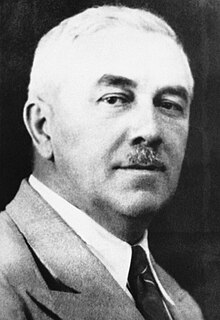Nikolai Lvovich Markov (Russian: Николай Львович Марков, Persian: نیکولای مارکف, 9 January 1883 – 19 November 1957) was a Russian architect working in Iran.
Nikolai Markov | |
|---|---|
 | |
| Born | 9 January 1883 |
| Died | 19 November 1957 (aged 74) |
| Resting place | Doulab Cemetery, Tehran |
| Nationality | Russian |
| Alma mater | Imperial Academy of Arts |
| Occupation | Architect |
| Buildings | Alborz High School, Holy Mother of God Church, Tehran, Fakhr al-Dawla Mosque |
Biography edit
Prior to his decisive settling in Iran, Markov was a high-ranking member of the Imperial Russian army, and fought in the Caucasus against the Bolsheviks under Colonel Nikolai Baratov, the commander of the Russian forces in Iran and to whose staff he was attached, and had served with the fanatically anti-Bolshevik Major-General Lazar Bicherakov, another one of Baratov's senior officers.[1] A staunch supporter of the White movement, in the years around and after the Bolshevik Revolution, he had served as a captain in the Persian Cossack Brigade under General Vsevolod Starosselsky as well.[1] Nikolai Markov later worked for the Municipality of Tehran where he built many buildings.[2][3][4][5] Alborz High School, the Post Office and Telecommunications of Tehran, factories and even a mosque.[6] He was buried at the Doulab Cemetery.
Gallery edit
-
Tehran Municipality
-
Post Museum (formerly Post Headquarters)
-
New Dar ul-Funun
-
Anoushirvan High School
-
Adle House
-
Singer Headquarters
-
Jeanne d Arc School
-
Georgian Prince Mausoleum
-
Varamin sugar refinery
References edit
- ^ a b Cronin, Stephanie (2013). "Deserters, converts, Cossacks and revolutionaries: Russians in Iranian military service, 1800–1920". In Cronin, Stephanie (ed.). Iranian-Russian Encounters: Empires and Revolutions Since 1800. Routledge. p. 173. ISBN 978-0415624336.
- ^ "Tehran Building Manifests European Architecture" (PDF). www.iran-daily.com (in French).
- ^ Com, www. Asagraphic. "Nikolai Markov 1882- 1957 / 1261 -1336". www.darioush-shahbazi.com (in Persian).
- ^ Daniel, Elton L.; Mahdī, ʻalī Akbar (2006). Culture and customs of Iran Par Elton L. Daniel,ʻAlī Akbar Mahdī (in French). ISBN 9780313320538.
- ^ {{Country data {{{1}}} | flaglink/core | variant = | size = | name = | altlink = national rugby union team | altvar = rugby union}} "Article Izvestia du 12.01.07". www.izvestia.ru.
- ^ "La revue de Théhéran - Du messager à cheval au courrier électronique Le Musée des Postes et Télécommunications de l'Iran". www.teheran.ir (in French).
- ^ Marketa Hulpachova; Sourena Parham (February 11, 2016). "From palace to prison: Iran's Qasr – in pictures". The Guardian / The Tehran Bureau. Retrieved December 26, 2017.